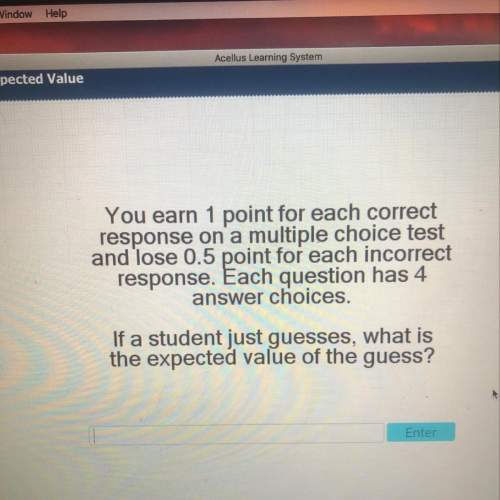
Mathematics, 21.04.2020 01:25 liyahheadhigh
A medical test has a 95% accuracy of detecting a Condition Z if the person has it. It also has a 97% chance to indicate
that the person does not have the condition if they really don't have it. If the incidence rate of this disease is 10 out of
every 100:
What is the probability that a person chosen at random will both test positive and actually have the disease (i. e., get a
true positive)?
What is the probability that a person chosen at random will test positive but not have the disease (i. e., get a false
positive)?

Answers: 1
Another question on Mathematics

Mathematics, 21.06.2019 17:20
Read the situations in the table below. then drag a graph and equation to represent each situation. indicate whether each of the relationships is proportional or non-proportional. edit : i got the right answer its attached
Answers: 2



Mathematics, 21.06.2019 20:30
What is the difference between the equations of a vertical and a horizontal line?
Answers: 2
You know the right answer?
A medical test has a 95% accuracy of detecting a Condition Z if the person has it. It also has a 97%...
Questions

Mathematics, 09.03.2021 07:50

Chemistry, 09.03.2021 07:50

Biology, 09.03.2021 07:50



Mathematics, 09.03.2021 07:50

Chemistry, 09.03.2021 07:50

History, 09.03.2021 07:50



English, 09.03.2021 07:50

English, 09.03.2021 07:50

History, 09.03.2021 07:50




History, 09.03.2021 07:50

Mathematics, 09.03.2021 07:50


Health, 09.03.2021 07:50





